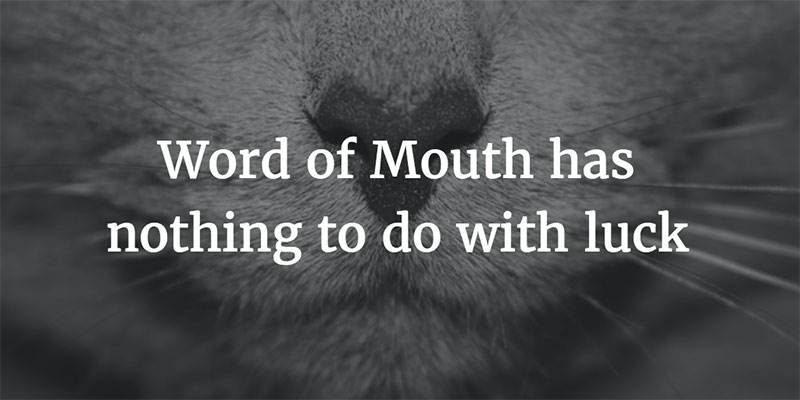How amazing would it be if your customers were so happy with your product, they just went out and told everyone how great it is, how much they like it, and how everyone needs to try it? What if they actively recommended it to their peers and colleagues? New Sales leads would flow in like so many wildebeests migrating across this river in Tanzania.

Look at all those eager leads braving treacherous waters just for the chance to subscribe to your product. In this hypothetical world, your marketing team would be more-or-less obsolete. Your case studies, your demand gen emails, and your inbound content would essentially write itself.
As a marketing copywriter, this is my nightmare.
Thankfully, the alternate universe in which customers do all of our work – without pay – is completely mythical, right? Only very lucky companies get free Word of Mouth advertising – and even for popular products it’s rare. You can’t count on it. You can’t predict it. My job is safe.
I’ve staked my career on the belief that companies will always need good writers who know what they’re talking about and know how to get the word out. (Also, I’m hoping that robots won’t replace me anytime soon.) However, the reality is that you really can systematically engage your customers to create great marketing content for you. That’s not a perk of Customer Success; it’s a feature.
You can operationalize Word of Mouth. You must operationalize Word of Mouth. It’s not “nice to have,” it’s “essential to have.”” The Lifetime Value of a Customer Advocate is much higher than a non-advocate. There are two main reasons for that:
- The benefits of positive reviews and references to your brand are tangible. It’s not quite free advertising, because you will need to invest in making it happen, but it’s a lot cheaper than paying for advertising, and often just as effective or more. There’s a lot of evidence that even something as simple as a glowing online review can very effectively drive leads to your product.
- There’s a documented psychological side-effect that happens when you advocate for someone. You might know it as the Ben Franklin Effect. In Ben Franklin’s autobiography, he described how something as simple as asking to borrow a book from a rival legislator helped bridge the gap and create a lifelong partnership. Whether or not that’s a legendary story, the psychological effect is real. It’s all part of the theory of cognitive dissonance, which says that the way you treat another person influences how you feel about them. Basically, the gist is that you don’t do favors for people you like; you like people you do favors for. Ask your customers for references. It will make them like you. They will stick around longer.
But there’s really no need to convince anyone that Word of Mouth is good and Customer Advocacy is good and positive reviews are good. You want to know how to do it. Here are three steps to building predictable, consistent Customer Advocacy:
- Set milestones: Just to be clear, these are your customer’s milestones, not yours. It could start with something as simple as converting from free trial use to paid. Then it’s finishing onboarding, then perhaps an expansion of your customer’s use of the product. The bottom line is that you want to look at these milestones from the customer’s perspective. When they master a feature of your product, for example, they’ll feel great about themselves and about the product. Put yourself in the customer’s shoes and ask, “what are the specific points in the lifecycle that they’ll feel really good about accomplishing?” Those are the milestones you want to flag as significant.
- Track key events: How do you know when those milestones are achieved? You need to be tracking your users’ progress through your software. A good milestone to track would be a license expansion or completing onboarding. But let’s say another Milestone is mastery of a specific feature. You should figure out what usage indicators can you use to determine when that happens.
- Organically reach out for advocacy: Whenever a customer passes a success milestone, reach out to them and ask for a review or reference. With your high-touch clients, this could look like a phone call, with low-touch clients it could be an email or automated feature built into the product. The point is that it feels organic. And your request should feel organic too. They’ve just achieved something that they feel good about. Now’s the time to ask them for help.
The next step is getting those raves and reviews into the hands of your marketing team. Trust me, they’ll know what to do with them. But even if you never published a quote or a case study, you’ve already accomplished your goal: creating a Customer Advocate. That’s a person who will tell his or her colleagues and peers about your product. That’s a person who will probably be happy to help out with favors down the road. That’s a person who just became way more likely to renew or buy more licenses. And that’s a big part of what Customer Success is all about.
